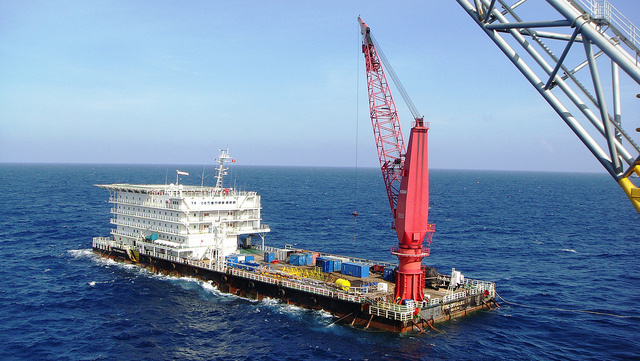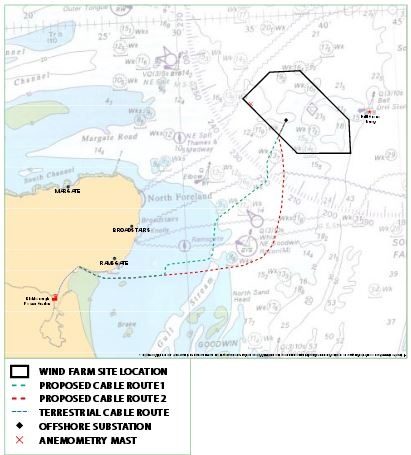Inside Offshore Wind - The Thanet Offshore Wind Farm
The central aim of the UK Government’s energy policy is to establish a supply of energy that is diverse, sustainable and secure and is offered at competitive prices. Key to this goal is a 60% reduction of carbon dioxide emissions by 2050. The development of renewable energy plays a key role in the Government’s strategy for carbon reduction.
in particular, it has set a target that 10% of the UK’s electricity supply should come from renewable sources by 2010. This was subsequently revised to 15% by 2015, and the Government has an aspiration of increasing this further to 20% by 2020. The Government’s targets for renewable energy will help the UK to meet its international obligations, but also obtain greater security of energy supply through the promotion of indigenous electricity generation.
The development of the Thanet project aimed at helping the UK move towards its goals by reducing emissions of carbon dioxide by approximately 36 million tonnes over its 40 year lifetime, when compared to generating the equivalent electricity from a coal fired power station.
The Thanet Offshore Wind farm (Thanet) project is located 11.3km offshore from Foreness Point, the eastern most part of the Kent coastline. Between 60 and 100 wind turbines make up the wind farm, and the amount ultimately depended upon the size of turbine chosen and based on a maximum output of 300mW. This was enough to provide electricity for 240,000 average homes, which accounts for a significant proportion of the energy needs of East Kent.
The maximum height of the turbines are up to 150m (approx 500 feet) from sea level to the blade tip in the vertically up position and the minimum clearance is 22m (approx. 70 feet) to the blade tip in the vertically down position. The spacing between turbines is a minimum of 450m (approx 1,500 feet).
The turbine nacelle, or hub, complete with three blades is mounted upon a cylindrical steel tower, which in turn is supported by a foundation fixed to the seabed. A number of different foundation types were considered for the Thanet project. Given the seabed conditions, water depth and environmental conditions at the site, it was considered that either monopiles or gravity base structures (GBs) would be the most likely alternatives. The wind farm also includes an anemometry mast to collect data on wind speed and direction data.
The turbines are interconnected by a buried 33kV cable network and connected to an offshore substation platform where the voltage is stepped up to 132kV. Electricity is transferred to shore by two export cables, which are then routed to a landfall point in the northern part of Pegwell Bay. The cables are buried to a depth of between 1m and 3m depending on localised seabed conditions. Cable installation is required a bespoke cable plough, which minimized disturbance to the seabed by cutting a narrow trench little wider than the cable itself, whilst consecutively laying the cable and pushing the sediments back into place. Grid connection was realised via cables buried under the A256 sandwich road to the existing substation at the disused Richborough Power station, from where power is distributed via the existing local electricity network.

The wind farm’s operational life is planned for 40 years after which it would be decommissioned. A full Decommissioning Plan was agreed upon prior to construction and includes the complete removal of all offshore structures above seabed level.
It is anticipated that the cables would be disconnected and left buried, with notification that they are disused, as is currently common practice. Regular servicing of the turbines takes place on a continuous basis from a service base located at Ramsgate.
To receive more information on this article, our Newsletter or find out more about what w3.windfair.net has to offer, please, do not hesitate to contact Trevor Sievert at ts@windfair.net.
Please don't forget to follow us on Twitter: w3.windfair.net on Twitter
w3.windfair.net is the largest international B2B internet platform in wind energy – ultimately designed for connecting wind energy enthusiasts and companies across the globe.
- Source:
- Warwick Energy Limited / Photo Credit: Creative Commons / Ken Doerr
- Author:
- Edited by Trevor Sievert, Online Editorial Journalist / by Warwick Energy Limited Staff
- Email:
- ts@windfair.net
- Link:
- w3.windfair.net/...
